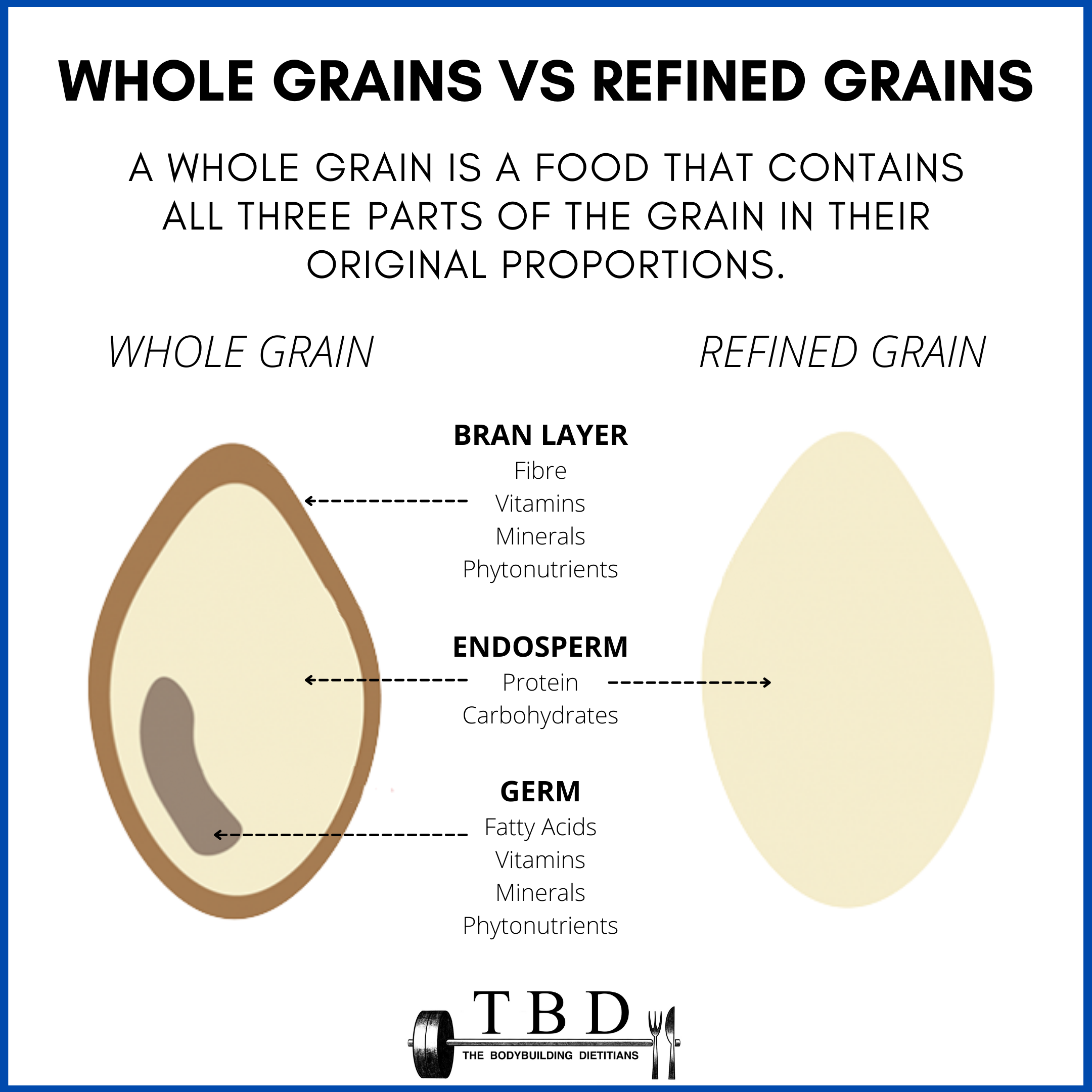Quite commonly we're told to eat more "whole grains" than "refined grains", however the reason why is not usually explained.
The term ‘whole grain’ is used to describe an intact grain, flour or a food that contains all three parts of the grain. However, processing grains in general does not necessarily produce ‘refined grains’ or exclude them from the Australian definition of a ‘whole grain’. It's more so the degree of processing that occurs. For example, when reading an ingredient list it is evident that a food contains whole grains if some of the following are listed:
whole grain [name of grain], whole wheat / whole [other grain], stoneground whole [grain], wholemeal, brown rice, oats, oatmeal, multigrain, sprouted, whole grain, malted whole grain, sorghum, quinoa, or buckwheat.
However, the following list of ingredients do not constitute as "whole grains": wheat, or wheat flour, semolina, durum wheat, organic flour, stone ground, enriched flour, de-germinated (corn) bran, wheat germ, legumes such as soybeans, lupins, lentils, seeds like chia, linseed, sesame seed, etc.
The bran and germ of a grain is what contains fibre, phytonutrients, a variety of fatty acids, as well as complex B vitamins and minerals such as iron and magnesium. On the other hand, the endosperm primarily contains protein and starch. This is why whole grains are generally encouraged over refined grains, as their nutritious combination of macro and micronutrients can lower blood sugar levels, aid digestion, increase satiety and support a healthy gut microbiome.
On the flip side however, it’s not inherently mandatory to consume all of your daily grain sources from whole grains. This is particularly if energy and carbohydrate requirements are high, and overall micronutrient requirements are met through a variety of other plants and minimally-processed foods. Therefore, just like every dietitian and nutritionist will (hopefully) tell you "moderation is key!"
